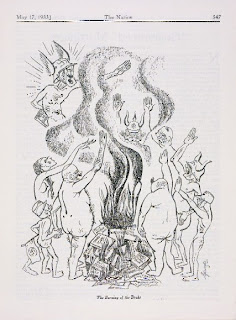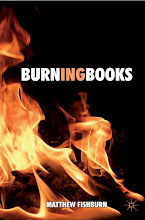It’s a favourite habit of writers to become nervous about their early writings. I was reading Tom Paulin’s The Invasion Handbook the other day, a work which sent me rummaging around on google, trying to follow some of the more difficult leads. I ended up looking at a few interviews with Paulin, including this one from the Guardian in 2002, in which he alludes to an earlier trip to the incinerator:
‘By the time Paulin left school he knew he wanted to write, and when he went to Hull University to read English in 1967 it was with the express intent of later returning to Belfast for a teaching job that would allow time to write. “But I didn't get anywhere with my writing at Hull,” he explains, and describes his early unpublished work as “inchoate”. He later burnt it all. “Maybe I am not so happy about that now. It was something I did in my 20s. You go through a bad time and think ‘where am I going?’. And I thought I would just clean everything out.”’
Nicholas Wroe, The Guardian 23 March 2002
http://www.guardian.co.uk/books/2002/mar/23/poetry.academicexperts
Friday, January 30, 2009
Wednesday, January 28, 2009
1933: The Nation
 Curiously, although there were many cartoons on the Nazi bookfires in 1933, the majority of them were openly mocking. The Nation, the left-leaning American weekly was no exception, publishing this cartoon by Georges Schreiber in which a group of moustachioed militarists, industrialists and SA men caper about in the nude, looking something like a George Grosz caricature. Hitler looms large over the pyre, holding a copy of the works of de Sade, while on the fire are copies of the Old Testament, the Nation itself, and the writings of Thomas Mann burn (Thomas Mann, of course, was not on the first Nazi blacklists). What the juxtaposition implies, of course, is that the wrong books are being burned, while the decrepit figures suggest the bankruptcy of their ideas.
Curiously, although there were many cartoons on the Nazi bookfires in 1933, the majority of them were openly mocking. The Nation, the left-leaning American weekly was no exception, publishing this cartoon by Georges Schreiber in which a group of moustachioed militarists, industrialists and SA men caper about in the nude, looking something like a George Grosz caricature. Hitler looms large over the pyre, holding a copy of the works of de Sade, while on the fire are copies of the Old Testament, the Nation itself, and the writings of Thomas Mann burn (Thomas Mann, of course, was not on the first Nazi blacklists). What the juxtaposition implies, of course, is that the wrong books are being burned, while the decrepit figures suggest the bankruptcy of their ideas.
Subscribe to:
Posts (Atom)

